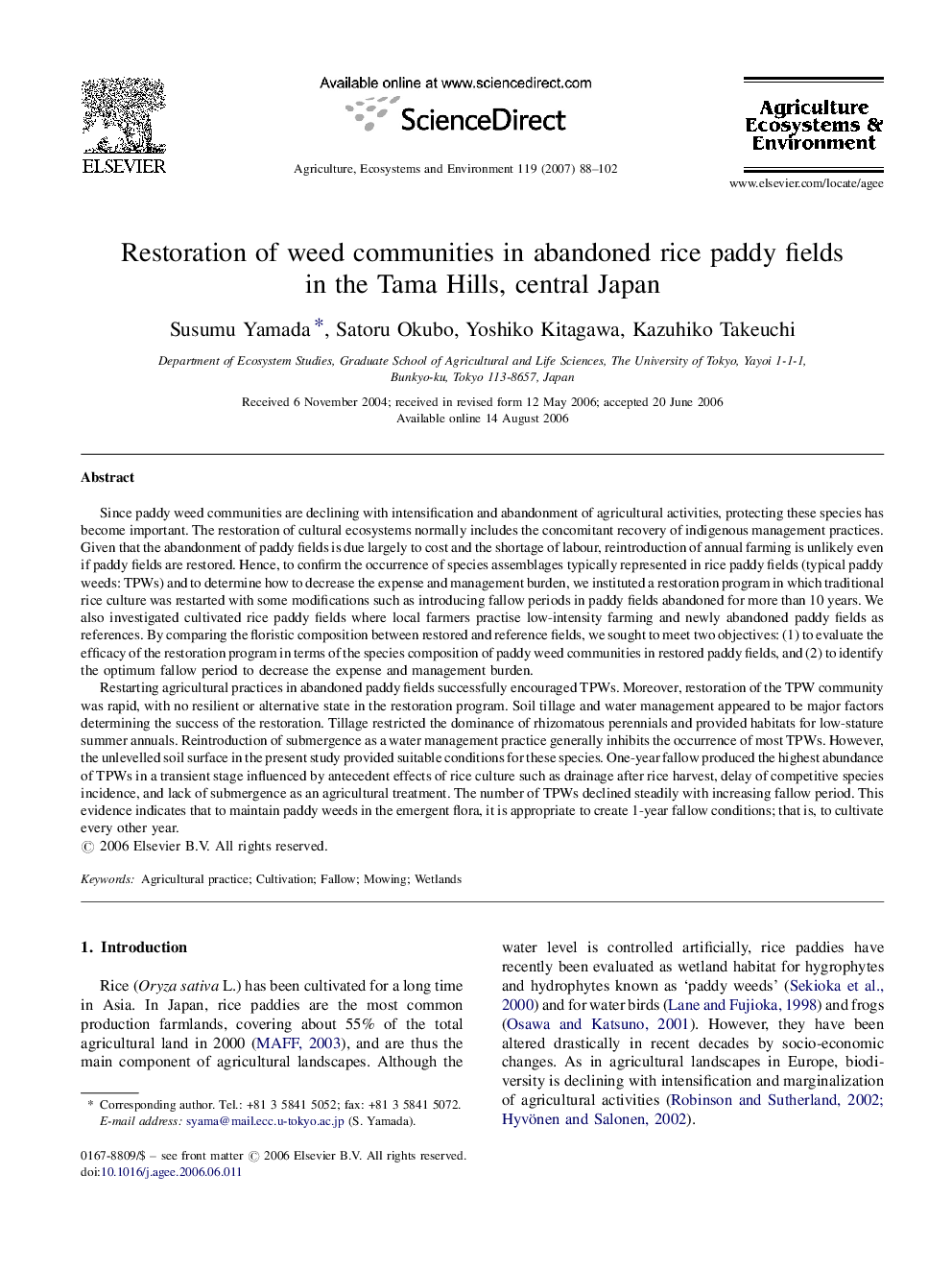| کد مقاله | کد نشریه | سال انتشار | مقاله انگلیسی | نسخه تمام متن |
|---|---|---|---|---|
| 2415920 | 1552143 | 2007 | 15 صفحه PDF | دانلود رایگان |

Since paddy weed communities are declining with intensification and abandonment of agricultural activities, protecting these species has become important. The restoration of cultural ecosystems normally includes the concomitant recovery of indigenous management practices. Given that the abandonment of paddy fields is due largely to cost and the shortage of labour, reintroduction of annual farming is unlikely even if paddy fields are restored. Hence, to confirm the occurrence of species assemblages typically represented in rice paddy fields (typical paddy weeds: TPWs) and to determine how to decrease the expense and management burden, we instituted a restoration program in which traditional rice culture was restarted with some modifications such as introducing fallow periods in paddy fields abandoned for more than 10 years. We also investigated cultivated rice paddy fields where local farmers practise low-intensity farming and newly abandoned paddy fields as references. By comparing the floristic composition between restored and reference fields, we sought to meet two objectives: (1) to evaluate the efficacy of the restoration program in terms of the species composition of paddy weed communities in restored paddy fields, and (2) to identify the optimum fallow period to decrease the expense and management burden.Restarting agricultural practices in abandoned paddy fields successfully encouraged TPWs. Moreover, restoration of the TPW community was rapid, with no resilient or alternative state in the restoration program. Soil tillage and water management appeared to be major factors determining the success of the restoration. Tillage restricted the dominance of rhizomatous perennials and provided habitats for low-stature summer annuals. Reintroduction of submergence as a water management practice generally inhibits the occurrence of most TPWs. However, the unlevelled soil surface in the present study provided suitable conditions for these species. One-year fallow produced the highest abundance of TPWs in a transient stage influenced by antecedent effects of rice culture such as drainage after rice harvest, delay of competitive species incidence, and lack of submergence as an agricultural treatment. The number of TPWs declined steadily with increasing fallow period. This evidence indicates that to maintain paddy weeds in the emergent flora, it is appropriate to create 1-year fallow conditions; that is, to cultivate every other year.
Journal: Agriculture, Ecosystems & Environment - Volume 119, Issues 1–2, February 2007, Pages 88–102